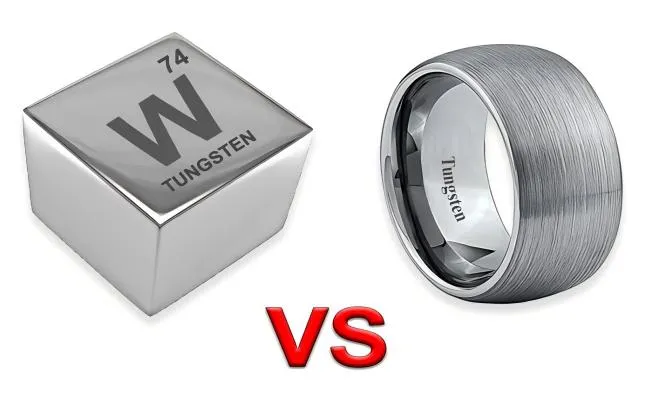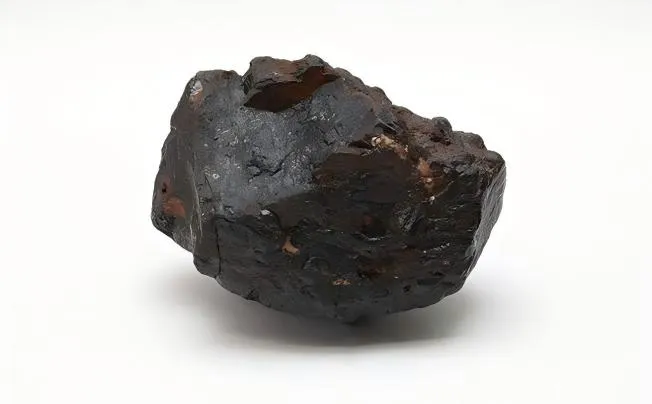Definition of Ferrotitanium
Ferrotitanium can be defined as an alloy containing both iron (Fe) and titanium (Ti) as its primary constituents. The proportion of these elements can vary depending on the specific grade and intended application of the alloy.
Typically, ferrotitanium consists of around 20–75% titanium content by weight, with the remaining composition being predominantly iron along with trace amounts of other elements such as carbon, silicon, and aluminum. This alloy undergoes processing through smelting techniques to achieve desired chemical compositions and physical properties tailored to meet specific industrial requirements.
Composition and Properties
Ferrotitanium, a ferroalloy composed of iron and titanium, typically contains around 20–75% titanium along with small amounts of carbon and other alloying elements. The exact composition can vary based on the intended application and manufacturing process.
This alloy exhibits excellent strength-to-weight ratio, corrosion resistance, and high-temperature stability due to the presence of titanium. In terms of properties, ferrotitanium offers exceptional weldability characteristics, making it a preferred choice in various industrial sectors.
The addition of titanium to iron imparts unique properties to ferrotitanium, such as increased hardenability, improved wear resistance, and enhanced mechanical properties. This alloy is known for its ability to withstand extreme temperatures without losing its structural integrity.
Furthermore, ferrotitanium's chemical stability makes it suitable for applications requiring resistance to corrosion and oxidation. The combination of iron's durability with titanium's lightweight nature results in a versatile material that finds widespread use across different industries.
1. Gas Tungsten Arc Welding (GTAW)
Process Description
Gas Tungsten Arc Welding (GTAW), commonly known as TIG (Tungsten Inert Gas) welding, is a precise and versatile welding process that uses a non-consumable tungsten electrode to create the weld. In the case of ferrotitanium, GTAW involves creating an arc between the tungsten electrode and the workpiece while shielding the molten weld pool with an inert gas such as argon or helium. This process allows for greater control over heat input and weld quality.
Advantages and Limitations
One of the key advantages of GTAW for welding ferrotitanium is its ability to produce high-quality, clean welds with minimal spatter or smoke. The precise control over heat input makes it suitable for joining thin sections of ferrotitanium without causing distortion or warping.
However, GTAW can be a slower process compared to other welding techniques, which may not be ideal for high-volume production environments. Additionally, GTAW requires a high level of skill and operator dexterity to achieve optimal results.
Best Practices for Welding Ferrotitanium with GTAW
When welding ferrotitanium using GTAW, it is crucial to properly clean the base metal to remove any contaminants that could affect the integrity of the weld. Using a proper filler material compatible with ferrotitanium is also essential to ensure good fusion and mechanical properties in the welded joint.
Maintaining consistent travel speed and arc length during welding helps control heat input and prevent overheating of the material. Furthermore, post-weld treatments such as stress relieving or heat treatment may be necessary to improve the overall strength and durability of the weld.
2. Shielded Metal Arc Welding (SMAW)
Overview of The Process
Shielded Metal Arc Welding (SMAW), also known as stick welding, is a popular welding technique that utilizes a consumable electrode coated in flux to create an arc between the electrode and workpiece. The flux coating protects the molten weld pool from atmospheric contamination while providing additional alloy elements for improved weld quality. SMAW is known for its versatility in various applications due to its simplicity and effectiveness.
Suitability For Welding Ferrotitanium
SMAW can be effectively used for welding ferrotitanium due to its ability to generate strong fusion in thick sections of material. The portability and simplicity of SMAW equipment make it suitable for on-site repairs or fieldwork where access may be limited. When selecting electrodes for SMAW on ferrotitanium, it's important to consider factors like alloy composition compatibility, deposition rates, and slag formation characteristics that can impact overall weld quality.
Welding Parameters To Consider When Using SMAW On Ferro-titanium
When performing SMAW on ferrotitanium, adjusting parameters such as amperage, voltage, travel speed, electrode size, and polarity are crucial factors that influence penetration depth, bead shape, and overall mechanical properties of the welded joint. It's essential to maintain proper stickout distance between the electrode tip and workpiece surface while controlling arc length throughout the welding process.
Moreover, choosing appropriate preheat temperatures based on material thickness can help minimize cracking tendencies in ferro-titanium during SMAW operations.
Applications and Future Trends in Welding Ferro-titanium
Current Industrial Applications
Ferrotitanium, with its excellent strength-to-weight ratio and corrosion resistance, finds extensive applications across various industries. In the aerospace sector, ferrotitanium is used in the production of aircraft components such as landing gear, engine parts, and structural assemblies.
Its high strength and lightweight properties make it an ideal choice for ensuring optimal performance while minimizing weight. Additionally, ferrotitanium is utilized in the automotive industry for manufacturing exhaust systems, suspension components, and other parts that require durability and resistance to high temperatures.
Moreover, the chemical industry benefits from ferrotitanium's ability to withstand corrosive environments. It is commonly employed in chemical reactors, pipelines, and storage tanks where resistance to acids or alkalis is crucial.
The marine industry also leverages ferrotitanium due to its anti-corrosive properties for constructing ship structures like hulls and propeller shafts. These current industrial applications highlight the versatility of ferrotitanium as a valuable material in demanding environments.
Potential Future Developments
As technology advances and materials science evolves, there are exciting potential developments on the horizon for welding ferrotitanium. One promising area of research involves enhancing weldability through innovative welding techniques such as laser beam welding or friction stir welding. These methods offer precise control over heat input and can potentially reduce the formation of brittle phases during welding processes.
By exploring new welding approaches tailored specifically for ferrotitanium alloys, manufacturers may achieve higher-quality welds with improved mechanical properties. Furthermore, ongoing research focuses on developing advanced ferrotitanium alloys with tailored compositions to meet specific application requirements.
By carefully adjusting alloying elements like aluminium or vanadium, engineers aim to optimize properties such as strength, ductility, and weldability simultaneously. These customized alloys could open doors to novel applications in sectors demanding superior performance under extreme conditions.
Additionally, advancements in post-weld treatments like heat treatments or surface modifications may further enhance the overall weld quality of ferrotitanium components.







